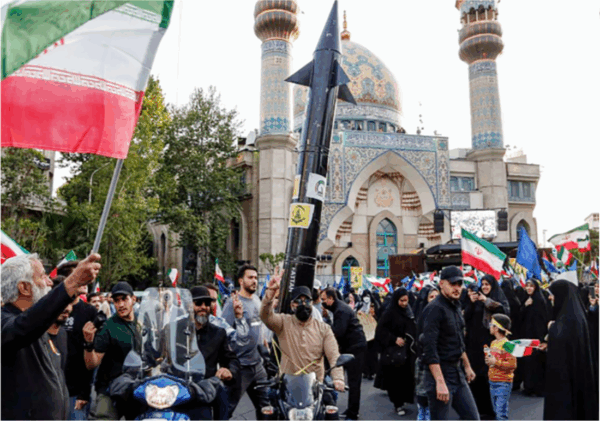By Abderrahmane MEBTOUL, professor of Universities .
Professor at universities, international expert in geostrategy, director of energy studies at the Ministry of Energy – Sonatrach 1964-1976 – President of the energy transition commission of the 5+5+Germany 2019-2021 – Doctor of State 1974 – Abderrahmane MEBTOUL – member of several international organizations
What are the possible scenarios of the Israel-Iran conflict?
The current conflict between Iran and Israel has implications for the Middle East but concerns the whole world. Between geopolitical flare-ups and strategic maneuvers, markets are heating up. As military tensions between Israel and Iran intensify, analysts are revising their forecasts. In the medium and long term, this fits into a strategy aiming at a deep geostrategic reconfiguration of this region, reminiscent of the Greater Middle East plan, which will have implications on North Africa and sub-Saharan Africa through the entire Sahel region. We have three scenarios: firstly, a long open war between Israel and Iran could disrupt the energy markets and commercial routes of the region, hosting some of the most financially profitable oil and gas reserves in the world. This would have global repercussions, as the Middle East hosts some of the most financially profitable hydrocarbon reserves, where thousands of non-profitable deposits could be discovered depending on the evolution of the international price and operating costs. Secondly, apart from this space, one must consider the gas and oil reserves and production of the USA, Russia, the three largest producers along with Saudi Arabia, Venezuela, Nigeria, Mozambique in Africa, the reserves of the Turtle Island in Senegal-Mauritania, and especially Libya, whose upcoming stabilization could disrupt the entire Euro-Mediterranean region, the largest oil reservoir in Africa with over 44 billion barrels, over 1500 billion cubic meters of gas exploited at only 10%, and in green, blue, and white hydrogen, for less than 7 million inhabitants who could become Europe’s main supplier, directly competing with Algeria. Also, an increase in production, in addition to other OPEC and non-OPEC countries, in case of a persistent crisis is not excluded. Thirdly, the most realistic scenario, contrary to some sites in need of publicity that are already announcing a price of $150, is that a solution will be found to avoid a global economic recession, with the barrel expected to be around $63-65 by 2025, $60 in 2026, and $30-33 per megawatt-hour for gas. This contribution highlights the socio-economic situation of Iran, a great civilization, and the energy impacts of this conflict that suddenly raised the price of oil to over $74.23 per barrel on June 14-15, 2025, from $63, and the price of gas per megawatt-hour to $40 from $32 before the conflict.
2. Geopolitical tensions in the Middle East and their impacts on the energy sphere
The Middle East represents 32.7% of oil production and 20% of natural gas, with reserves of 60% oil and 40% natural gas. Iran has gas reserves of 30,000 billion cubic meters, behind Russia with 34,000 and ahead of Qatar with 20,000, and estimated oil reserves of 160 billion barrels. Iran, like Russia, faced with Western sanctions and heavily dependent on hydrocarbon sales, holds 11.5% of the world’s conventional oil reserves, the second in the Middle East behind Saudi Arabia (the first being Venezuela but heavy oil), the fourth world producer between 3.5 and 4 million barrels per day, and the second world gas reserve behind Russia with 15% of global reserves and a gas production capacity of over one billion cubic meters per day. But, as with oil, it must take into account the high domestic consumption and the price significantly lower than the international market price. Above all, Iran controls the Strait of Hormuz, through which about 25-30% of hydrocarbon products transit, bordered by the Sultanate of Oman connecting the Persian Gulf to the Arabian Sea and the Indian Ocean. This narrow maritime passage is one of the strategic points of global trade, giving it high strategic importance. More than three-quarters of these exports are destined for Asian countries, primarily China, India, and Japan. If the conflict between Iran and Israel spreads to neighboring countries, the geostrategic consequences and the impact on the global economy could be particularly heavy, with direct effects of interruptions in hydrocarbon supplies increasing the cost of energy for all supply chains and production costs, with a price exceeding $100 per barrel, inflationary pressures, and ultimately an economic recession affecting the most vulnerable countries and paradoxically the oil-producing countries due to reduced demand. It is also important to consider tensions in the Red Sea, where between 12-15% of global trade in goods transit, playing a particularly important role in Europe-Asia exchanges (40% of trade), where, according to the Kiel Institute, a container sailing between China and Europe has increased from an average of $1500 to $4000. Depending on the volume exported and price fluctuations, hydrocarbons in Iran represent 85-90% of export revenues and 40-50% of budget resources. To meet these needs and unable to source Western products, Iran is strengthening its partnerships with neighboring countries and Asia, notably China, often at preferential prices, as well as Russia towards India and China. Most Iranian production sites are concentrated and vulnerable, mainly located near Iraq or offshore in the Arabian Gulf. Two regions of Iran (Lorestan and Khuzestan for oil, South Pars for gas) hold 90% of its oil and 63% of its gas.
In conclusion, Iran’s relations with its main neighbors, especially Saudi Arabia, Israel, Egypt, Russia, Oman, and the United Arab Emirates, will continue to shape the external landscape, as well as the future of Iraq, Lebanon, Syria, and the South Caucasus. The future of Palestine, current rivalries, competition for influence, and regional power struggles of major powers and their subcontractors could potentially increase tensions and modify the regional map.


